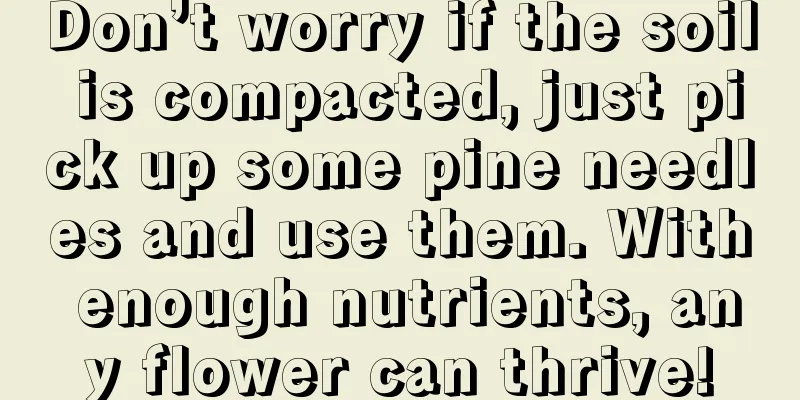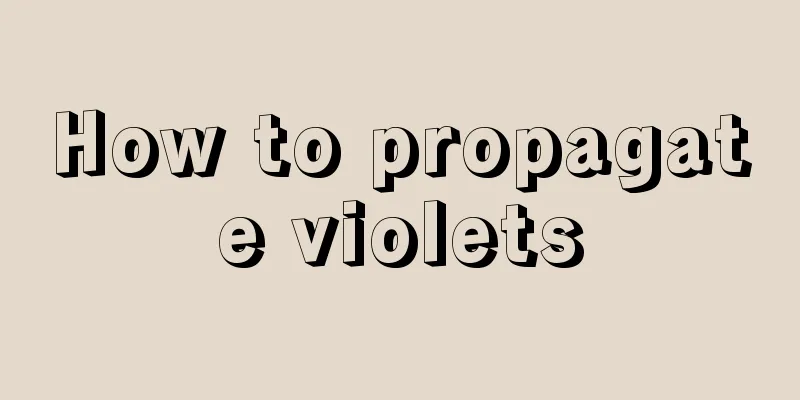Don’t worry if the soil is compacted, just pick up some pine needles and use them. With enough nutrients, any flower can thrive!

|
In fact, it is very common for the soil to become compacted during the flower-growing period, because the nutrients in the soil matrix itself are limited. If they are absorbed by the roots but not fully replenished, they will become dry and cracked. At this time, we need to add something to help the soil restore nutrients so that the growth of the plants can return to normal. Many times when we encounter signs of soil compaction, the first thing we want to do is to use a shovel, but this is not feasible. Because the soil is compacted and cracked, the roots of the flowers in it are almost stuck to the soil. If we use a shovel directly to dig, it may damage the flower roots. If the roots of the flowers are damaged, the growth of the plants will naturally not be good. Add some small things to the soil to help restore nutrients. We can choose to add some pine needles. Although pine needles are inconspicuous, when mixed with the soil, they can enhance the nutrients and air permeability of the soil, thereby promoting the growth of plants. Moreover, pine needles are found everywhere in our daily life, and they are free to use and have good effects. Because pine needles are also from the plant family, the nutrients they contain are relatively mild and easy to absorb. In addition, their texture is very hard. When we mix them with soil, they can enhance its air permeability and looseness. Before using pine needles, we need to expose them to the sun for disinfection. After all, they are collected from outdoors and must contain more bacteria and impurities. After processing the pine needles, we can choose to place them at the bottom of the flowerpot as base fertilizer or directly mix them with the soil to enhance nutrients. This can greatly improve the compacted soil and restore its original air permeability and nutrition. Soil compaction is actually a common problem in flower cultivation. If we remember to use the correct method to improve it, it will not affect the growth of the plants too much. I wonder how everyone improves the problem when they encounter soil compaction? You can share it together. |
Recommend
Is the red spider lily a Lycoris flower? What is the difference between the red spider lily and the Lycoris flower?
1. Is it Lycoris? Red spider lily is a type of Ly...
How to grow lotus and what to pay attention to
Lotus growth habits Lotus is commonly found in ca...
How to prune Mengxianglan after flowering
Pruning after flowering of Dream Orchid Mengxiang...
The efficacy, function and edible method of Prunella vulgaris
Prunella vulgaris is a plant of the Lamiaceae fam...
How to propagate Begonia
1. Division method It is usually carried out in e...
Rafflesia: Blooming Silently in Loneliness
The Flower Language of Rafflesia Li Shangyin used...
How to cultivate Thousand Buddha Hands
How to grow Thousand Buddha Hands Thousand Buddha...
How to plant hyacinth
1. Choose the soil Hyacinths prefer sandy soil wi...
What medicine to use for moldy succulent leaves
1. What medicine to use If the leaves of succulen...
Chlorophytum comosum and ivy...can absorb formaldehyde and cure diseases, 100 pots are not too many!
Chlorophytum Chlorophytum has a good effect on ab...
If you want flowers to grow faster, just do one little thing!
1. Tips for growing asparagus fern quickly 1. Fer...
Which flowers can be watered with aspirin and how much water should be added?
The effect of aspirin mixed with water on flowers...
How to grow camellia well?
Camellia is a popular plant known for its elegant...
How to reproduce centipede grass and the time and method of reproduction
Centipede grass reproduction method The common me...
Purple jalapa pictures
Introduction to Mirabilis jalapa Mirabilis jalapa...









